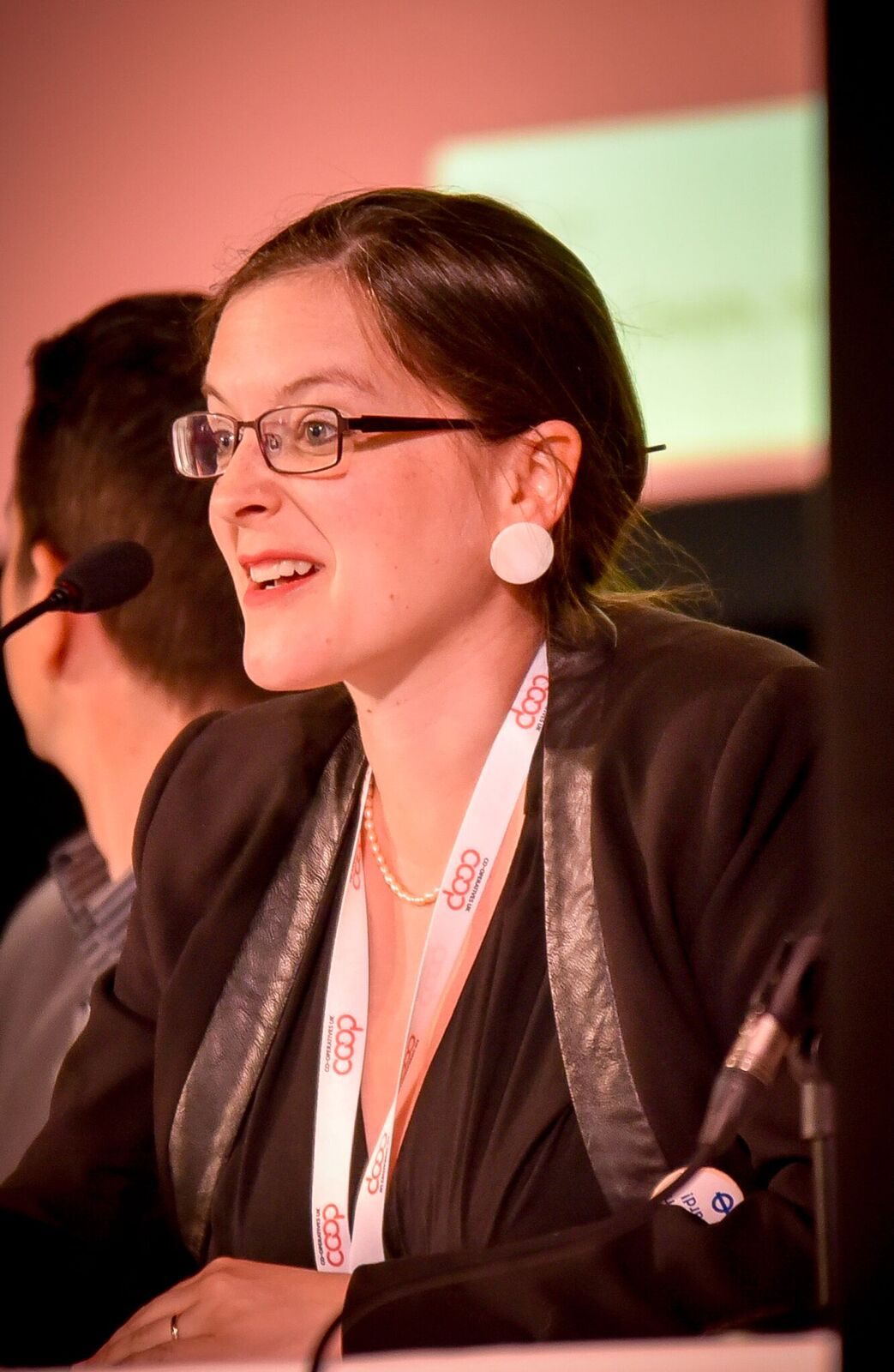A session at Congress 2017 on reimagining the community looked at how the co-op movement can repurpose assets to benefit local areas.
Chaired by Mark Simmonds (Co-op Culture), the panel consisted of Jonny Gordon-Farleigh (Stir to Action), Rachel Laurence (New Economics Foundation (NEF)) and Frances Northrop (independent co-op consultant).
Picking up on themes discussed in the event’s previous debate on reimagining the economy, Rachel Laurence said her organisation “has for a long time tried to work with communities to translate grand ideas about how to transform the economy to something that works at ground level”.
Local economies
She said NEF had developed a toolkit – Plugging the Leaks – to help people create healthy local economies.
“Think of your community as a leaky bucket; money comes into it and money goes out,” she said. “Why isn’t money poured into communities having an effect? We need to identify opportunities local people can make something of.
“Think about how local economies work, what changes can we make, how can we make things run better?”

She said it was important to understand what outcome you want.
“Most people don’t say they want economy growing,” she added, “Most people say they want it to generate good lives for the people who live here, in a way thats good for the environment.”
To that end, there is a need to create stronger local supply chains and to empower local communities with more cohesion.
“The co-op sector can do more to empower people to change their economic systems,” she added.
Jonny Gordon-Farleigh took up this theme, looking at how co-ops can be more involved in delivering an economy that benefits people, focusing on local authorities and heritage.
“There are some real strategic opportunities for co-ops to work in these sectors,” he said, citing the example of Preston, where local procurement had increased and the worker-owned business model was favoured for council contracts.
Related: Actor Michael Sheen on Congress, co-ops and a fairer economy
“They’re simplifying their tenders and retraining procurement officers about the co-op model,” he said. “Local authorities can support emerging digital sector co-ops. We’re talking to Preston about this.”
He said co-ops also need to do more to understand the needs of local authorities.
Putting assets to work
Another area where co-operatives can be active in stimulating local economies and helping them to retain capital – and assets for the community – is heritage, he said.
Mr Gordon-Farleigh gave the example of community benefit societies saving pubs from closure and running them as co-ops, but said there was untapped potential elsewhere.
“The Church of England has 16,000 churches; National Trust has 630,000 acres of land,” he said. “What if National Trust properties were democratically governed by local and regional bodies? What if we unlocked these assets to support the community?”
With this in mind, Stir to Action has started year-long pilot of a scheme to repurpose churches for community projects.
Related: Congress sees launch of National Co-operative Development Strategy
“Projects which have physical assets are far more long-lasting that those that don’t,” he said, urging the movement to work to “relocalise physical assets” owned by the church, the heritage sector and local authorities.
Frances Northrop gave one example of how such an asset can be “relocalised”, discussing work on a brown-field site in Totnes, Devon.
Ms Northrop is a director of Totnes Community Development Society, which is planning a mixed-use development including community-owned housing on the empty site and has turned to planners, lawyers and architects for advice.
“We wouldn’t have been able to do that without the legal mechanism that co-ops have,” she said. “And it’s not just about that but the confidence it inspires in people over what else they might be able to do.
“We don’t know where we’re going to, we’re on a journey, we need things to guide us. The values of the co-op movement are a great guide for that work.”
This model could be replicated elsewhere, working with local authorities to repurpose buildings, Ms Northrop added.
“On the high street in Totnes there are high rents and the turnover of shops is massive. It’s a very precarious model of generating income. Local councils can invest to bring the use that we need – we might not need so many shops but we need housing.”
Unlocking capital
The panel also suggested co-ops work with local authorities to see them invest their pension funds in local projects, to unlock that capital and to keep it working in their own economies.
Mr Gordon-Farleigh warned there were obstacles to this. “Town councils might want local business,” he said, “but it’s the city councils that have the power and might be more conservative on these issues.”

And he said there was need for legislative change, in the form of a land tax, to ensure communities benefit from their assets.
“For instance, public money funded the Jubilee Line, and once that was in place private landlords saw the value of their property go up, and they captured that value. A land value tax would tap into that and redirect it to communities.”
Rachel Laurence believes one answer could be to become landlord yourself, buy property and let it out. “We need to be more creative with investments,” she said, calling for a change in the law that obliges local authorities to get the maximum value of land they sell. “This can edge out community groups and we need to remove that obligation,” she added.
From the floor, David Alcock from Anthony Collins solicitors described how although the legal tools exist, local authorities aren’t always willing to use them.
“We need to campaign against delinquent ownership of sites which have lain fallow for 20 years, and encourage local authorities to use their power to put a compulsory purchase order,” he said.
“There are tools communities can use for land to be disposed of at lower value if you can demonstrate the community benefit. We have to demonstrate will to use them.”
The panel also touched on the need to engage with private companies and individuals as well as local authorities, giving the example of wind turbines operated on private farms, and encouraging retiring business owners to transition their firms and assets to the community.
But there is also a need for a more sympathetic banking sector. Mr Gordon-Farleigh said the US had a more conducive banking system but in the UK it was a problem.
Ms Laurence added: “Unless we get a locally based stakeholder-owned banking sector, we’re a bit screwed. The main reason we don’t have that banking sector is it’s very difficult to get a banking licence.”
Ms Northrop agreed. “The really big problem in raising any kind of finance is that everybody is very risk averse. A local investment structure would make it easier to assess risks.”

